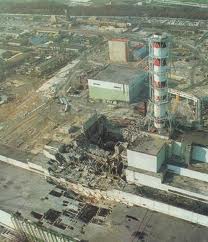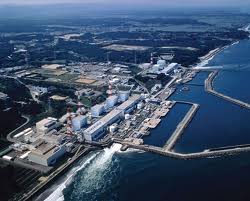Warnings of Nuclear Plant Dangers, Were Dismissed by Authorities
By Sherwood Ross

A radioactive plume escaping from a nuclear-powered generating plant…could “march across the countryside like the angel of death,” author Howard Morland warned in the October, 1979, issue of Harper’s magazine. Given the earthquake-triggered calamities at several of Japan’s nuclear plants over the past few days, Morland’s article takes on added significance.
Like those from other informed experts over the years about the inherent dangers from nuclear plants, Morland’s warnings were disregarded. Dr. Helen Caldicott, the anti-nuclear activist, has long contended (See her “Nuclear Power is Not The Answer” published by New Press) nuclear power generating plants are inherently dangerous as meltdowns at the Three Mile Island plant in the U.S. in 1979 and the Chernobyl plant in Russia in 1986 proved. (Note: It didn’t take an earthquake to trigger accidents in those plants.) And according to UK’s The Guardian newspaper, four years ago Japanese seismologist Ishibashi Katsuhiko predicted that such an accident was highly likely to occur on grounds that nuclear power plants in Japan have a “fundamental vulnerability” to earthquakes. Japanese officials surely listened—but took no action.
In his 1979 article, Morland wrote that a lethal nuclear plume would “irradiate everything it touched” and that the only hope for persons would be to flee the area (as they are doing in Japan right now). As the radioactive plume from a nuclear plant blowout would consist of “particles one micron in diameter, far too small to see,” they could enter a building through small openings and then stick to ceilings and walls the way smog particles coat the windows of an automobile.” He added that “Gamma radiation emanating from the plume would penetrate easily through the walls and ceilings of houses.”
Now, this meltdown tragedy appears to be in danger of unfolding in Japan, where Associated Press has just reported that a second hydrogen explosion in three days rocked a Tokyo Electric Power Co. plant Unit 3 Monday after a similar explosion occurred last Saturday at Unit 1, injuring four workers and causing mass evacuations. The operating firm said it had lost the ability to cool Unit 2. “More than 180,000 people have evacuated the area in recent days,” AP said, and up to 160 may have been exposed to radiation. Monday’s blast at the plant was felt 25 miles away. AP added that fuel rods at a separate reactor in Unit 3 “were fully exposed after it lost its ability to cool down.”
Japanese officials are struggling to cool the rods in the reactor with sea water to prevent another explosion. Analysts say the use of sea water for cooling is a sign of desperation.
In view of the tragic circumstances at the stricken Japanese nuclear plants, my article, “Nuclear Power Not Clean, Green or Safe,” distributed in January, 2007, follows:
Nuclear Power Not Clean, Green or Safe
By Sherwood Ross
Wednesday 10 January 2007
In all the annals of spin, few statements are as misleading as Vice President Cheney’s that the nuclear industry operates “efficiently, safely, and with no discharge of greenhouse gases or emissions,” or President Bush’s claim that America’s 103 nuclear plants operate “without producing a single pound of air pollution or greenhouse gases.”
Even as it refuses to concede global warming is really happening, the White House touts nuclear power as the answer, as if it were an arm of the Nuclear Energy Institute (NEI), the industry’s trade group. NEI’s advertisements declare, “Kids today are part of the most energy-intensive generation in history. They demand lots of electricity. And they deserve clean air.”
In reality, not only are vast amounts of fossil fuels burned to mine and refine the uranium for nuclear power reactors, polluting the atmosphere, but those plants are allowed “to emit hundreds of curies of radioactive gases and other radioactive elements into the environment every year,” Dr. Helen Caldicott, the antinuclear authority, points out in her book Nuclear Power Is Not the Answer(The New Press).
What’s more, the thousands of tons of solid radioactive waste accumulating in the cooling pools next to those plants contain “extremely toxic elements that will inevitably pollute the environment and human food chains, a legacy that will lead to epidemics of cancer, leukemia, and genetic disease in populations living near nuclear power plants or radioactive waste facilities for many generations to come,” she writes. Countless Americans are already dead or dying as a result of those nuclear plants, and that story is not being effectively told.
To begin with, over half of the nation’s dwindling uranium deposits lie under Navajo and Pueblo tribal land, and at least one in five tribal members recruited to mine the ore were exposed to the radioactive gas radon 220 and “have died and are continuing to die of lung cancer,” Caldicott writes. “Thousands of Navajos are still affected by uranium-induced cancers,” she adds.
As for uranium tailings discarded in the extraction process, 265 million tons of it have been left to pile up in the Southwest, and pollute it, even though they contain radioactive thorium. At the same time, uranium 238, also known as “depleted uranium,” (DU) a discarded nuclear plant byproduct, “is lying around in thousands of leaking, disintegrating barrels” at the enrichment facilities in Oak Ridge, Tennessee; Portsmouth, Ohio; and Paducah, Kentucky – where ground water is now too polluted to drink, Caldicott writes.
Fuel rods at every nuclear plant leak radioactive gases or are routinely vented into the atmosphere by plant operators. “Although the nuclear industry claims it is ’emission free,’ in fact it is collectively releasing millions of curies annually,” the author reports.
Speaking of safety, since the Three Mile Island (TMI) plant meltdown on March 28, 1979, some 2,000 Harrisburg area residents settled sickness claims with operators’ General Public Utilities Corp. and Metropolitan Edison Co., the owners of TMI.
Area residents’ symptoms included nausea, vomiting, diarrhea, bleeding from the nose, a metallic taste in the mouth, hair loss, and red skin rash, typical of acute radiation sickness when people are exposed to whole-body doses of radiation around 100 rads, said Caldicott, who arrived on the scene a week after the meltdown.
David Lochbaum, of the Union of Concerned Scientists, believes nuclear plant safety standards are lacking and predicted another nuclear catastrophe in the near future, stating, “It’s not if, but when.” Not only are such plants unsafe, but the spent fuel is often hauled long distances through cities to waste storage facilities where it will have to be guarded for an estimated 240,000 years.
“The magnitude of the radiation generated in a nuclear power plant is almost beyond belief,” Caldicott writes. “The original uranium fuel that is subject to the fission process becomes 1 billion times more radioactive in the reactor core. A thousand-megawatt nuclear power plant contains as much long-lived radiation as that produced by the explosion of 1,000 Hiroshima-sized bombs.”
Each year, operators must remove a third of the radioactive fuel rods from their reactors because they have become contaminated with fission products. The rods are so hot they must be stored for 30 to 60 years in a heavily shielded building continuously cooled by air or water lest they burst into flame, and must afterwards be packed into a container.
“Construction of these highly specialized containers uses as much energy as construction of the original reactor itself, which is 80 gigajoules per metric ton,” Caldicott points out.
What’s a big construction project, though, when you don’t have to pay for it? In the 2005 Energy Bill, Congress allocated $13 billion in subsidies to the nuclear power industry. Between 1948 and 1998, the US government subsidized the industry with $70 billion of taxpayer monies for research and development – corporate Socialism, pure and simple.
As for safety, an accident or terrorist strike at a nuclear facility could kill people by the thousands. About 17 million people live within a 50 mile radius of the two Indian Point reactors in Buchanan, New York, just 35 miles from Manhattan. Suicidal terrorists, Caldicott noted, could disrupt the plant’s electricity supply by ramming a speedboat packed with explosives into their Hudson River intake pipes, where water is sucked in to cool the reactors. Over time, the subsequent meltdown could claim an estimated 518,000 lives.
Caldicott points out there are truly green and clean alternative energy sources to nuclear power. She refers to the American plains as “the Saudi Arabia of wind,” where readily available rural land in just several Dakota counties “could produce twice the amount of electricity that the United States currently consumes.” Now that sounds clean, green, and safe. And I betcha it could be done through free enterprise, too. Somebody, quick, call in the entrepreneurs!
About the writer: Sherwood Ross is a Miami-based reporter who runs the Anti-War News Service. To comment or contribute reach him at sherwoodross10@gmail.com

Sherwood Ross is an award-winning reporter. He served in the U.S Air Force where he contributed to his base newspaper. He later worked for The Miami Herald and Chicago Daily News. He contributed a weekly column on working for a major wire service. He is also an editorial and book publicist. He currently resides in Florida.
ATTENTION READERS
We See The World From All Sides and Want YOU To Be Fully InformedIn fact, intentional disinformation is a disgraceful scourge in media today. So to assuage any possible errant incorrect information posted herein, we strongly encourage you to seek corroboration from other non-VT sources before forming an educated opinion.
About VT - Policies & Disclosures - Comment Policy




